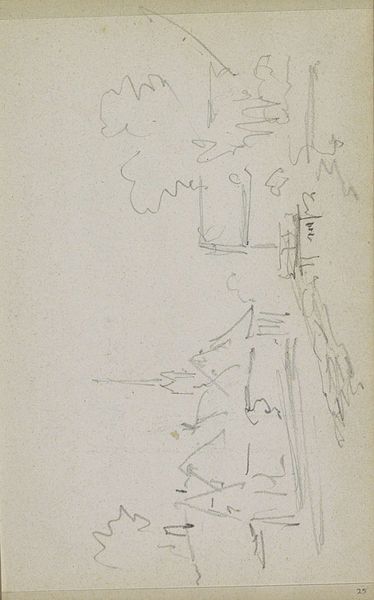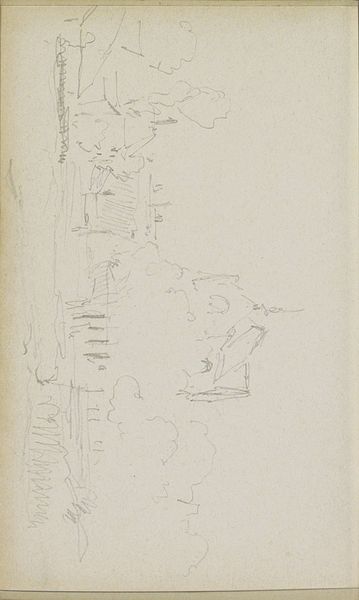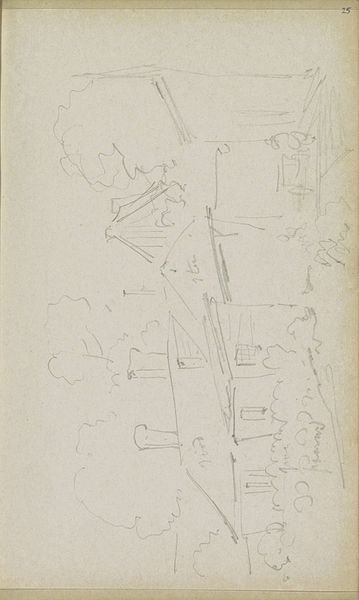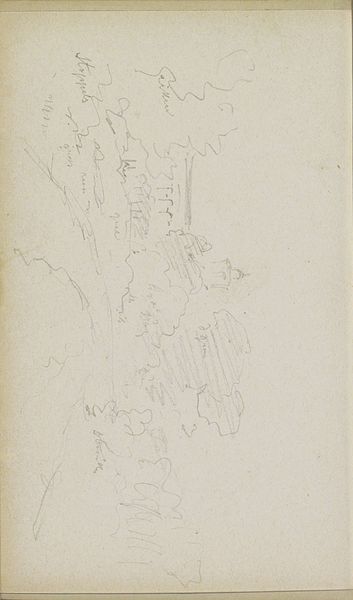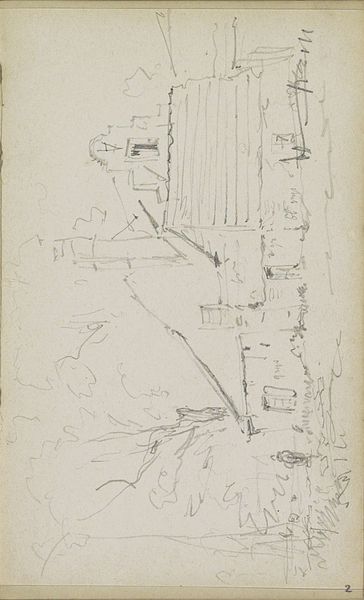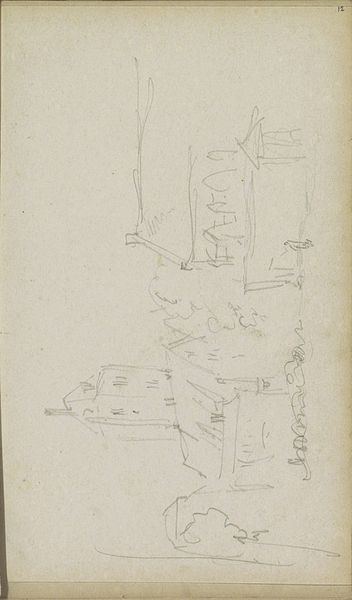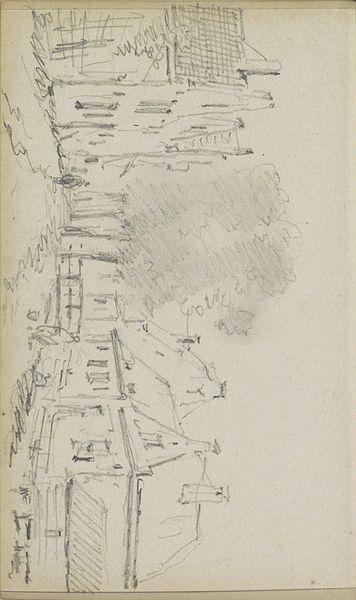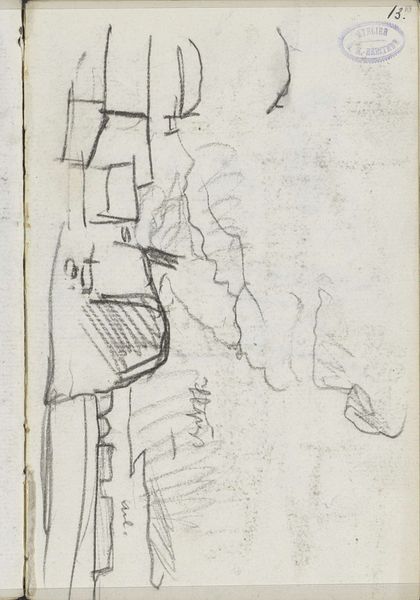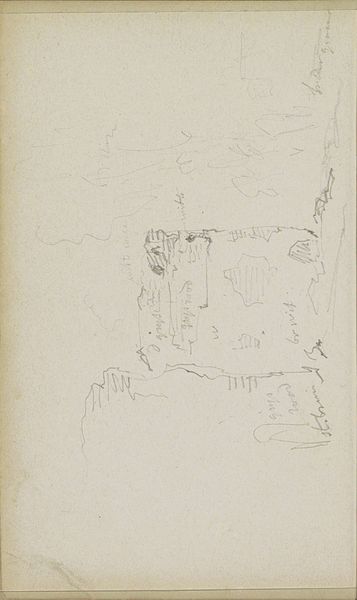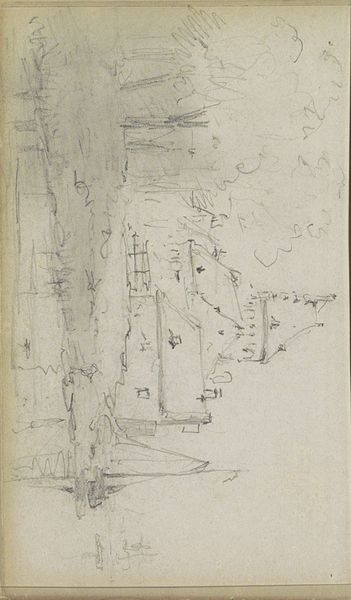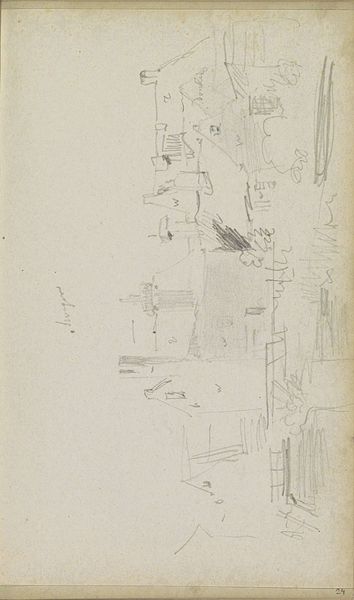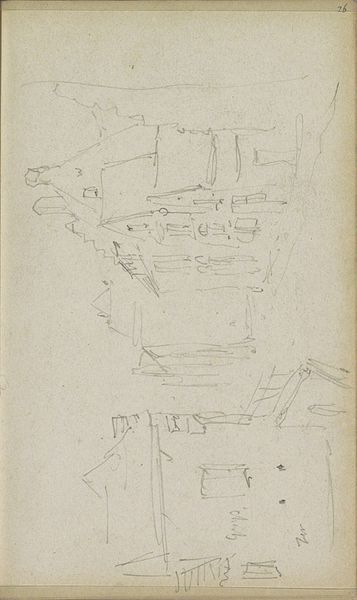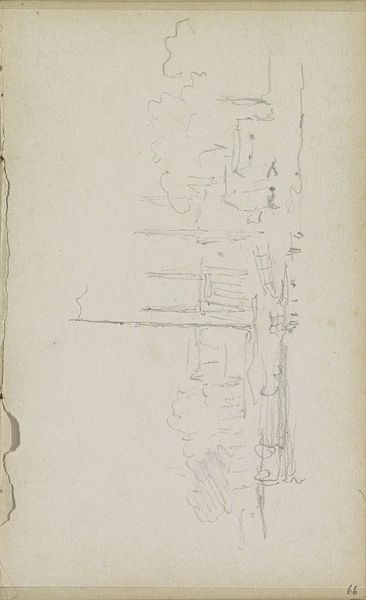
Copyright: Rijks Museum: Open Domain
Editor: So, this is "Gezicht op de ruïne van Kasteel Brederode," a pencil drawing from sometime between 1828 and 1897 by Adrianus Eversen. It’s a quick sketch, almost ghostly. I’m curious, what do you see in this piece? Curator: I see a dialogue about power and its inevitable decay. Castles, throughout history, have symbolized not only architectural and military strength, but also sociopolitical dominance. By depicting Brederode as a ruin, Eversen implicitly critiques the structures that perpetuate inequality and oppression. Editor: That's interesting. I was just seeing it as a romantic landscape. Curator: But doesn't the very concept of "romantic" landscape often sanitize and idealize the realities of power? Think about the labour and resources that built this castle. Where are the workers? Whose stories are being left out when we focus solely on the aesthetic beauty of the ruin? Consider the symbolism of decay. What does it tell us about the temporal nature of control, especially in relation to the communities who may have resisted that control? Editor: I guess I hadn't thought of it in terms of resistance. So, you see it as more than just a pretty picture, but almost as a political statement? Curator: Precisely. Ruins, like this one, are physical reminders of what once was and, by extension, opportunities to examine what *should* be. What new, more equitable structures can rise from the ashes of the old? Editor: I never thought a simple pencil drawing could have so much to say. Curator: Art has always been a powerful vehicle for social commentary. It's up to us to learn how to decode its messages. Editor: I'll definitely look at landscapes differently now! Curator: That’s all that matters, seeing with fresh, critically conscious eyes.
Comments
No comments
Be the first to comment and join the conversation on the ultimate creative platform.
